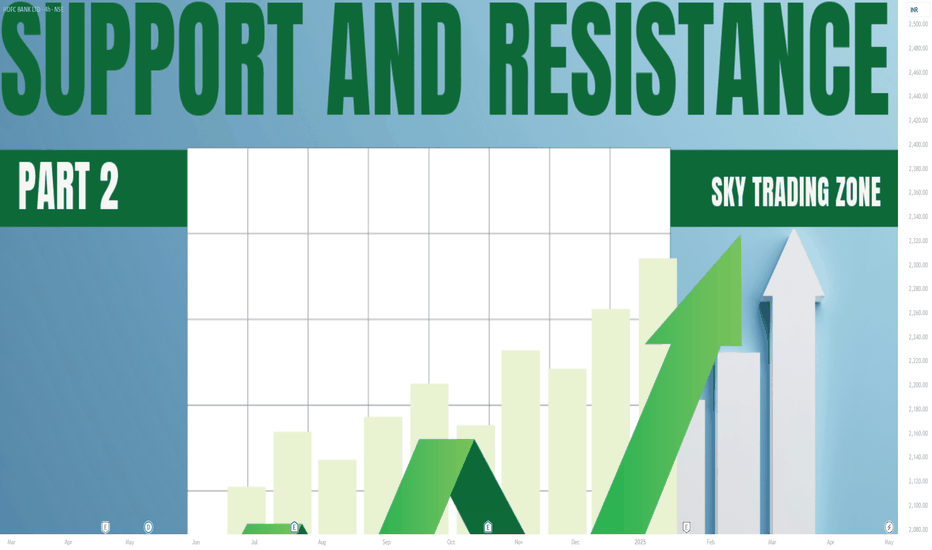Support and Resistance part 2Support occurs at the point where a downtrend is expected to pause due to a concentration of demand. Resistance occurs at the point where an uptrend is expected to pause due to a concentration of supply. Support and resistance areas can be identified on charts using trendlines and moving averages.
Harmonic Patterns
Technical ConceptA "technical concept" refers to a specific idea or principle within a technical field, like engineering, computer science, or a specific industry. It's a fundamental building block that helps explain how something works, what it does, and why it's used. These concepts are often complex and require a certain level of technical understanding.
Divergence In the stock market, divergence refers to when the price of an asset moves in a direction opposite to what a technical indicator, like an oscillator, indicates. This discrepancy can signal a weakening trend and a potential reversal. There are two main types of divergence: bullish and bearish.
Support and Resistance part 2In technical analysis, support and resistance refer to price levels on a chart where the market's movement is expected to pause or reverse due to the forces of supply and demand. Support is a price level where the price has historically stopped falling, indicating that buyers are plentiful at that price point, and that the market is likely to bounce back upwards. Resistance, on the other hand, is a price level where the price has historically stopped rising, suggesting that sellers are abundant and the market is likely to fall back down.
What is PCR ?PCR, or Polymerase Chain Reaction, is a molecular biology technique used to make many copies of a specific DNA segment. It's like a "molecular photocopying" process that amplifies a tiny DNA sequence into millions or even billions of copies. This technique is widely used in research, diagnostics, and forensics.
RSI ExplanationThe Relative Strength Index (RSI) is a momentum indicator used in technical analysis to assess the speed and magnitude of price changes. It helps traders identify potential overbought and oversold conditions in a financial instrument, suggesting when an asset might be nearing a trend reversal. RSI values range from 0 to 100, with readings below 30 often indicating oversold conditions and readings above 70 suggesting overbought conditions'
Option TradingOption trading involves buying or selling contracts that give the right, but not the obligation, to buy or sell an underlying asset (like a stock) at a specific price (strike price) by a certain date (expiration date). It allows traders to speculate on future price movements of an asset without actually owning it.
Explanation of RSIThe Relative Strength Index (RSI) is a momentum indicator used in technical analysis to assess the speed and magnitude of price changes. It helps traders identify potential overbought and oversold conditions in a financial instrument, suggesting when an asset might be nearing a trend reversal. RSI values range from 0 to 100, with readings below 30 often indicating oversold conditions and readings above 70 suggesting overbought conditions.
RSI Divergence RSI divergence in trading occurs when the price of an asset and its Relative Strength Index (RSI) indicator move in opposite directions. This divergence suggests a weakening of the current trend and a potential reversal. For example, if the price makes a new high, but the RSI makes a lower high, it could indicate bearish divergence and a potential price drop. Conversely, if the price makes a new low, but the RSI makes a higher low, it could indicate bullish divergence and a potential price increase.
RSI MeaningRSI stands for Relative Strength Index. It's a technical indicator used in financial markets to measure the speed and magnitude of recent price changes, helping traders identify potential overbought or oversold conditions. The RSI, developed by J. Welles Wilder Jr., typically ranges from 0 to 100. A value above 70 generally suggests an asset is overbought, while a value below 30 may indicate it's oversold.
Option and Database TradingIn financial markets, options trading refers to buying and selling contracts that give the holder the right, but not the obligation, to buy or sell an underlying asset (like a stock, index, or ETF) at a specific price (strike price) within a certain time frame. Database trading, on the other hand, involves the buying and selling of data assets or the rights to use specific datasets, often for financial or commercial purposes.
Basic to Advance in TradingMake profits in intraday.
Stock market concepts and workings explained from very basic level.
Learn powerful day trading strategies.
Learn a step by step approach of how to trade in intraday.
Trend Following (Wealth Generation)
Learn the art of minimizing the risk and maximizing the return.
PCR StrategyThe Put-Call Ratio (PCR) is a popular technical indicator used by investors to assess market sentiment. It is calculated by dividing the volume or open interest of put options by call options over a specific time period. A higher PCR suggests bearish sentiment, while a lower PCR indicates bullish sentiment.
What is MACD ?MACD, or Moving Average Convergence Divergence, is a momentum indicator used in technical analysis to identify changes in the strength, direction, and duration of a trend. It's calculated by finding the difference between two exponential moving averages (EMAs) and then comparing that difference to its own EMA, according to Investopedia.






















